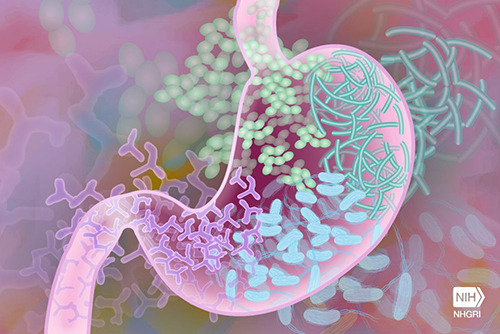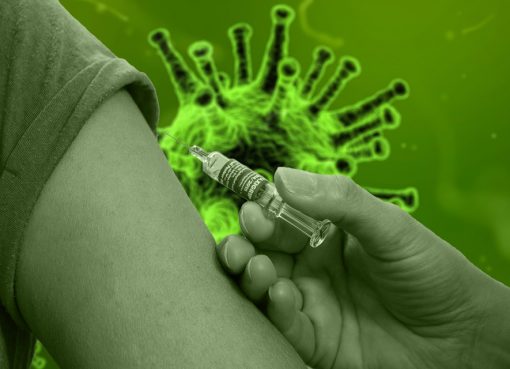Transgenic cow that produces human insulin
Diabetes is one of the major health problems and millions of people suffer from diabetes worldwide. Thus, there is heavy demand for insulin in the international market. By using cutting-edge biotechnological tools, researchers from University of Illinois, Urbana-Champaign, US have produced transgenic cattle that can produce human insulin in cow milk. The transgenic animal was produced by the somatic cell nuclear transfer method. For this, human insulin gene under the control of bovine β-casein promoter was cloned into pseudo-lentivirus and transduced into adult fibroblast cells collected from donor animals. Positive cells containing the insulin gene were used for nuclear transfer into enucleated oocytes. Then the oocytes were cultured in vitro to form embryos which were transferred to recipient cows. Out of the recipient cows, one pregnant cow delivered a transgenic calf. On analysis of the milk of the transgenic cow by western blot and mass spectrometry, it was observed that the milk contains proinsulin and insulin as well as proteases that could convert proinsulin into insulin. Hence, transgenic cows producing human insulin in milk could be an excellent machinery in the pharmaceutical industry which could meet the demand of many such therapeutic agents required for human health in future.
Sources:
- Monzani et al. (2024). Biotechnology Journal, 19 (3): 2300307 https://doi.org/10.1002/biot.202300307
- https://www.news-medical.net/news/20240314/Milestone-in-diabetes-treatment-Transgenic-cow-produces-human-insulin-in-milk.aspx
A new drug molecule to prevent hypertension
More than a billion people are having hypertension across the globe and it is a major cause of premature death. Recently, scientists from Universitat Autònoma de Barcelona (UAB) and other institutes have described the role of Transient receptor potential vanilloid 2 (TRPV2) channels in vasodilation. Proteins in the membrane of certain cells form the TRPV2 ion channel. Upon activation, this channel allows entry of positive ions from the extracellular environment and changes the state of the cells temporarily. The TRPV2 channels have important patho-physiological roles particularly in immunity, cardiac and neuromuscular function, metabolism, muscular dystrophy and cancer. The scientists established that activation of TRPV2 channels have several effects in different layers of the blood vessel leading to vasodilation. The scientific team has also identified a new molecule, viz.,
4-piperidin-1-sulfonyl-benzoic acid that can activate the TRPV2 channel. Thus, this molecule could be a potential drug in future to treat hypertension. Moreover, this molecule has sex-biased vasodilator effect as it produces more vascular relaxations in females.
Sources:
- Perálvarez-Marín, A. et al. (2024). Life Sciences. 336: 122286. https://doi.org/10.1016/j.lfs.2023.122286
- Catalina-Hernández, E. et al. (2023). Computational and Structural Biotechnology Journal. 23: 473-482. https://doi.org/10.1016/j.csbj.2023.12.028
- https://www.news-medical.net/news/20240306/UAB-study-identifies-new-molecule-for-treating-hypertension.aspx
A new therapeutic agent to treat EGPA, a rare autoimmune disease
Eosinophilic granulomatosis with polyangiitis (EGPA) is a rare autoimmune disease of human characterized by high blood and tissue eosinophil counts as well as inflammation of small and medium sized blood vessels which lead to damage of vital organs and tissues like heart, lungs, gastrointestinal tract, skin and nerves. Although patients use oral corticosteroids to control EGPA which reduces the risk of a relapse of EGPA symptoms, it causes severe toxic effects. Therefore, scientists from St. Joseph’s Healthcare Hamilton and McMaster University have identified a potential therapeutic molecule to treat EGPA. They conducted a clinical trial in 140 EGPA patients, where half of the patients received 30 mg of benralizumab and the other half received 300 mg of mepolizumab injections subcutaneously at one month interval for a year. Mepolizumab and benralizumab work by blocking the signals or receptors that draw eosinophils into various organs or tissues. The results of the one year study showed that 30 mg of benralizumab can produce better results than 300 mg of mepolizumab as about 15% more patients could completely withdraw oral glucocorticoids in benralizumab than the Mepolizumab treated group. Thus, benralizumab could be a promising drug to treat EGPA in future.
Sources:
- Wechsler, M.E. et al. (2024). The New England Journal of Medicine. 390: 911-921. https://doi.org/10.1056/NEJMoa2311155
- https://journals.plos.org/plosone/article?id=10.1371/journal.pone.0285726
Development of synthetic building blocks of life
The four nucleotides, A, T, G, C are the pillars of DNA molecules that carry genetic information of all life on earth. Nucleotides are made up of three different molecules which include a sugar molecule, a phosphate group and one of the four nitrogenous bases – adenine, thymine, guanine and cytosine. To increase the stability and functionality of DNA or RNA molecules, researchers have synthesized xeno nucleic acids (XNAs) which are known as threofuranosyl nucleic acids (TNAs) with a new, additional base pair. The TNAs have
4-carbon sugar and two additional nucleobases. The TNAs are more stable than natural DNA/RNA and possess enhanced functions. Cellular nucleic acid degradation enzymes don’t recognize this synthetic TNA; thus, it can be used in nucleic acid-based therapeutics. Moreover, it has several other applications in diagnostics, targeted drug delivery, and development of new aptamers for control of cellular mechanisms.
Sources:
- Depmeier, H. and Kath-Schorr, S. (2024). Journal of the American Chemical Society, 146 (11): 7743–7751. https://doi.org/10.1021/jacs.3c14626
- https://www.sciencedaily.com/releases/2024/03/240308123258.htm




